
All categories
Featured selections
Trade Assurance
Buyer Central
Help Center
Get the app
Become a supplier

(1341 products available)

















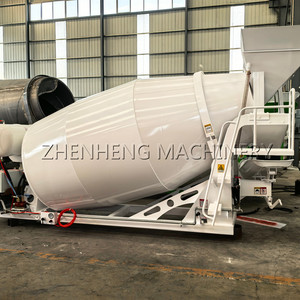


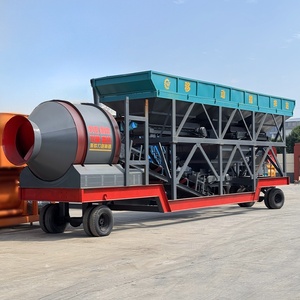
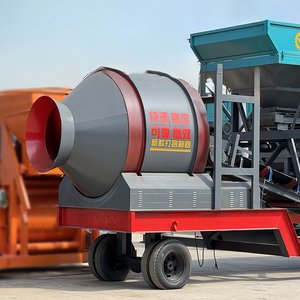



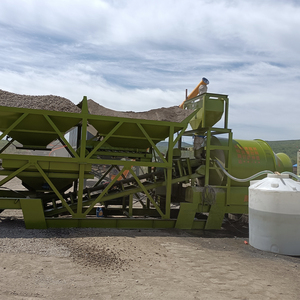










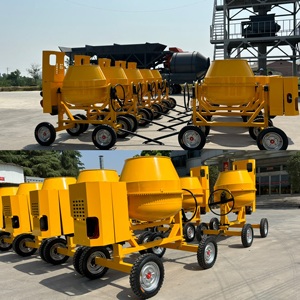




A concrete mixer is a machine for mixing concrete. Concrete mixers 240l are designed to mix large amounts of concrete, and they come in two main types: volumetric mixers and stationary mixers.
Volumetric Mixer
A volumetric mixer is a mobile mixing unit that can transport and mix raw materials like cement, water, aggregate, and additives in specified quantities or volumes. These mixers have separate compartments for each material, and they are mixed on-site in the exact volume needed. This mixer offers the benefit of producing concrete in any desired quantity and adjusting the concrete mix continuously as needed. It ensures controlling the quality of raw materials and minimizing waste through on-demand production. It is a great solution for projects with fluctuating concrete requirements or when a specific concrete mix is needed. A 240-liter capacity volumetric mixer is suitable for small to medium-sized projects. Examples of volumetric concrete mixers include the CIFA On Board, The Cannon Mixor and The Antec Nimbus.
Stationary Mixer
Cement mixers with motors that drive the mixing paddles are known as paddle mixers. In addition to water and cement, they may also include anhydrite, fly ash, lime, and aggregate. Before being discharged, the inputs are blended for a set period of time. The fact that paddle mixers can operate in batch or continuous mode makes them flexible. While continuous mode entails a constant inflow and outflow of materials, batching operations include a fixed input and a predetermined mixing period.Since their inception in the late 1990s, planetary mixers have gained recognition due to their efficient mixing capabilities and suitability for producing high-performance concrete. Fixed or tilting drum mixers that have an unmovable mixing tank are referred to as drum mixers. Drum mixers and batch mixers are two categories that may be distinguished. The fixed drum mixer mixes while spinning, and the tilting drum mixer spins and tilts to discharge the mixer in tilting mode. Using a rechargeable battery rather than electricity or gasoline, portable concrete mixers are made to be mobile, allowing them to be used anywhere without the need for a power source. Although some models have a pedestal and a drain plug for simple storage and cleaning, they are often held and used with two hands to pour concrete into areas where a full-sized mixer would not fit or be feasible.
Capacity
The 240L concrete mixer has a total drum capacity of 240 litres, which is equivalent to 0.24 cubic metres. This capacity is ideal for mixing small to medium batches of concrete, mortar, or other materials for various construction projects. It is important to note that the drum capacity is not the same as the mixing capacity. Typically, the mixing capacity is about 60 to 70% of the total drum capacity due to space limitations and the need to ensure that the mixed material is not too high.
Power source
Design and material
The design of the concrete mixer involves a rotating drum with blades attached to its inner sides. The concrete mixer can be towed behind a vehicle or placed on a sturdy stand for stationary use. It is made of high-quality steel. In general, there are two designs:
- Direct mix: Through the counter-clockwise rotation, the mixed material will not fall out from the drum, while reverse rotation of discharge will let the material out.
- Mix and discharge separately: Mixing takes place in one direction, and discharging occurs in the opposite direction.
Weight
The concrete mixer weighs approximately 70-80 kg, making it relatively easy to transport and maneuver on job sites compared to larger, more industrial-sized mixers.
Speed
With the help of its compact, efficient motor, the concrete mixer can achieve speeds of up to 28-30 rpm with no load. This speed enables thorough mixing and ensures a consistent final product.
It's important to note that the drum speed may differ depending on the power source and specific mixer model.
Despite their simple design, concrete mixers require regular maintenance to operate efficiently. Here are some helpful maintenance tips:
A concrete mixer machine is used primarily to mix concrete. However, it can be used for more than just mixing concrete, as the table below illustrates.
When choosing the right portable concrete mixer for the specific needs, it is necessary to consider the size paramount. Concrete mixers come in various sizes, from small 240L mixers to more giant mixers like 1100L Concrete Mixers. Consider the job's scale and the amount of concrete required. Determining how much concrete needs to be mixed at one time will help to choose a mixer that is the right size.
Other storage options are now available thanks to the increased accessibility of concrete pre-mixed solutions. Choosing a mobile mixer allows for more effortless transportation and concrete preparation anytime, anywhere. This flexibility can save time and costs on projects. Additionally, the direct-to-site delivery system eliminates the requirement to source suppliers closer to the job site. This supplier convenience can streamline the process and ensure a steady concrete supply.
It is essential to think about the mixing method when selecting the mixer. Concrete mixers use either drum or pan mixing methods to combine the ingredients. A popular choice for projects is the drum concrete mixer (also known as a tilting or non-tilting drum mixer) that mixes materials through the rotation of its drum. Non-tilting drums let the mixer discharge by tilting down. In contrast, a pan mixer uses horizontal shafts with paddles to stir the concrete on a flat circular container (the ''pan''), making it a better option for adequately mixing smaller batches or high-quality concrete.
Finally, it's essential to compare prices and features of different models before deciding. While choosing the cheapest option might be tempting, investing in a high-performance, long-lasting mixer will pay off in the future. Choosing a mixer with a smooth, predictable, fast, and straightforward mixing process will make the job easier and more efficient. Also, select a model that requires little maintenance and, if necessary, appropriate spare parts to ensure excellent service during use.
Q1: How does a concrete mixer work?
A1: A concrete mixer comprises different parts, including a mixing drum, motor, and feeding, discharging, and water-inlet chutes. After all the raw materials are loaded into the mixing drum through the feeding chute, the drum rotates, and the ingredients are mixed. Then, the motor makes the drum rotate in the opposite direction to discharge the concrete. Water can be directly added to the drum through the water-inlet chute. In some models, the raw materials are mixed after being blasted inside the drum through the water-inlet chute.
Q2: What thickness of concrete can a mixer handle?
A2: A concrete mixer can handle up to 6 inches of concrete thickness. However, owners should be careful when mixing thick concrete, as it can put extra strain on the motor and mixing blades.
Q3: Can users add more water to concrete after mixing?
A3: Users should not add more water to the concrete after mixing, as this will weaken its strength. Instead, they can add water to the mixer while it is mixing to achieve the desired consistency.
Q4: How long can concrete be kept mixed in a mixer?
A4: Generally, concrete can be kept mixed in a mixer for up to 30 minutes to an hour. However, if the mixer is kept running at high speed, it may be possible to keep the concrete for up to 2 hours. But don't keep the concrete mixing for a long time, or it will start to set and harden.